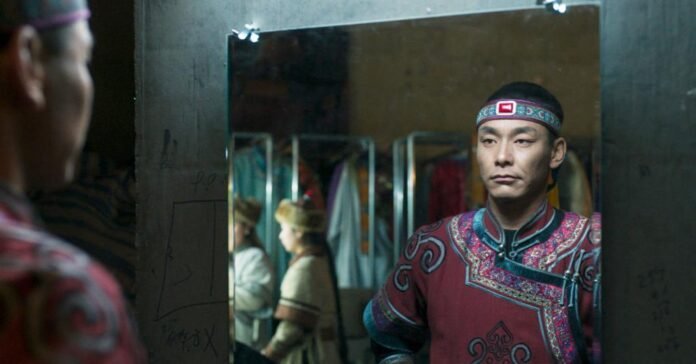Dir/scr: Jiang Xiaoxuan. Malaysia/Hong Kong/South Korea/Japan/Saudi Arabia/Thailand/US. 2024. 98mins
Every little thing in To Kill A Mongolian Horse indicators the tip of an period. Jiang Xiaoxuan’s elegiac first function tells the story of an Inside Mongolian herdsman and the way an ever altering world makes it inconceivable to maintain his conventional lifestyle. The movie involves Busan having earned Venice Movie Pageant’s Authors Below 40 Award for finest directing and screenwriting, and there may very well be specialist potential on this touching human story.
Jiang’s movie is immersed within the testing landscapes and traditions of Mongolia
Jiang met herdsman Saina whereas scouting places for her quick movie Graveyard Of Horses (2022), on which he turned manufacturing supervisor. Observing the challenges and modifications he confronted impressed her to create a fictionalised model of his life, with Saina taking part in himself and a non-professional forged as different vital characters. The Saina we see right here augments his herdsman revenue by showing in a present that has packaged Mongolia’s previous for the delight of vacationers. Taping up any accidents, he rides round an enviornment displaying his horsemanship and athleticism. “Courageous Mongolian warriors return victorious!” a voice declares as one other historic tableau is unveiled.
Cinematographer Tao Kio Qiu, who additionally shot Graveyard Horses, shows a selected affinity for the colourful spectacle as a shiny yellow ribbon is unfurled and snatched from the bottom, scenes unfold in deep crimson and blue swimming pools of sunshine and the lads are decked out in vibrant armour and helmets. In distinction, there’s virtually one thing noir-like within the shadows across the present and the backstage world of costume rails, quiet preparations and the camaraderie Saina has together with his good friend Hasa (Undus). It is a hyper masculine efficiency area the place accidents are endured and fears go unstated. Within the outdoors world, Saina is an more and more susceptible determine, caught between a vanishing previous and an unsure future.
A few of Saina’s diffidence and reserve is mirrored in a movie that’s finely judged and fascinating as we study the issues which have change into insurmountable. Saina lives with one foot prior to now. His coronary heart clearly belongs within the countryside, driving his beloved white stallion, however he has tasks. He helps his drunken, debt-ridden father (Tonggalag) and tries to offer for his younger son who lives within the metropolis together with his ex-wife Tana (Qilemuge).
Jiang is ready to illuminate so many cares of the fashionable world by way of the life of 1 man. Saina is a sufferer of local weather change, as extended drought threatens crops and livestock. He’s additionally on the mercy of wider modifications inside China, as rural populations head into cities or are drawn from the land by the safety of jobs in mining. Saina has already offered his sheep to pay his payments, and the guts of the movie turns into about what he’s ready to sacrifice to outlive and what the influence can be on his self-worth. There are additionally echoes of basic American westerns the place the imposition of civilisation leaves the person adrift in an inhospitable world; a thread that runs by way of Lonely Are The Courageous (1962) to The Rider (2017) and past.
Jiang’s movie is immersed within the testing landscapes and traditions of Mongolia, however her assured storytelling makes it resonate extra broadly as she attracts us into Saina’s dilemma and creates some deeply felt moments. Saina has a fascinating display screen presence, carrying the movie together with his calm authority and resilience. The non-professional forged round him are uniformly spectacular, as they too convey the heartache of discovering a spot in a world that feels so completely different to that of their ancestors.
Manufacturing corporations: Da Huang Photos, HUniche Photos
Worldwide gross sales: Pluto Movie data@plutofilm.de
Producer: Zhulin Mo, Tan Chui Mui
Cinematography: Tao Kio Qiu
Manufacturing design: Zongjian Hou
Modifying: Zhong Zheng
Music: Unur
Major forged: Saina, Tonggalag, Undus, Qilemuge, Qinartu








